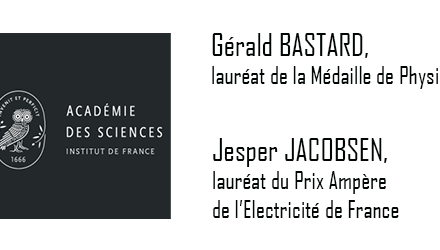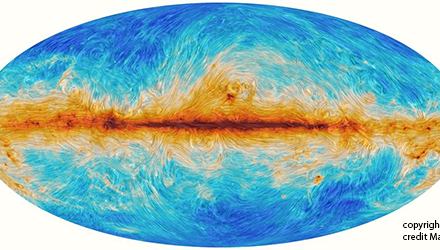Unlike the Earth, Jupiter has many natural satellites, including Europa, Ganymede, Callisto and so on. Europa is of particular interest to researchers, because it is strongly believed that the moon shelters a gigantic global ocean below the thin outer icy crust visible at the surface. Indeed, the Galileo space mission measured the magnetic field of the giant planet in the late 90s and demonstrated the presence of a conducting material on Europa, most likely liquid salt water. But how is it possible that liquid water remains stable on a moon without an atmosphere? What is the source of energy keeping the water in a liquid state under the ice crust?
While tidal forces due to the gravitational influence of Jupiter and the thermal convection in the ocean are two well accepted sources of energy, researchers at the ENS1 and Lerma2 Physics Laboratories have demonstrated the existence of another important source by numerically modeling the internal dynamics of the ocean. The numerical model might explain two observations on the satellite that are still poorly understood: the existence of vapor plumes at the satellite poles, and the numerous fractures of the ice crust at the equator.
Due to the rotation of the planet, Jupiter’s magnetic field, rotates at very high speed along the azimuthal direction. Europa is therefore subjected to an oscillating magnetic field which drives motions in its conducting ocean, just as the stator put in motion the rotor in an electromagnetic induction motor. By simulating this phenomenon and comparing with the Galileo observations, the researchers were able to predict the global salinity of the ocean. In addition, their model shows that the energy dissipated by Joule heating due to the induced currents is maximum at the poles; Together with tidal effects, this phenomenon may reduce the thickness of the ice layer, thus promoting the appearance of vapor plumes in the polar regions. Finally, their results predict the existence of a very strong equatorial oceanic jet (see Fig. 1) with a velocity of a few cm/s (two orders of magnitude below the terrestrial Gulf Stream). This current produces a constant torque on the ice shell, which might contribute to the formation of the mysterious cracks observed on Europa’s surface.
The forthcoming space missions (JUICE and Europa Clipper) aiming to investigate the possibility of life on Jupiter’s moons will probably provide a confrontation of this theory with observations.
In the meantime, adding the effects of tidal deformations to the present simulations will lead to an accurate description of the hydrodynamics of Jupiter’s most famous satellite….
1 ENS, CNRS, Sorbonne Université, Université Paris-Diderot
2 Observatoire de Paris, CNRS, Sorbonne Université, Université de Cergy-Pontoise

Figure 1 : Simulation of the azimuthal component Uφ of ocean jet velocity.
Author affiliation :
Laboratoire de Physique de L’Ecole normale supérieure (LPENS, ENS Paris/CNRS/Sorbonne Université/Univ. Paris Diderot)
You can also find Christophe Gissinger in France Inter’s “La tête au carré” show on April 9.
Corresponding author:
Communication contact:














